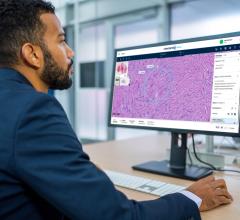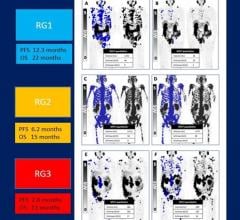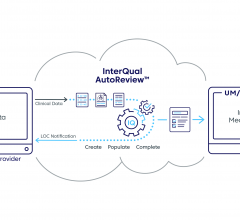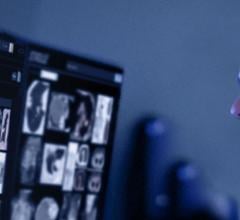
Photo courtesy of Siemens Medical Solutions.
Decision support for radiology is designed to benefit the radiologists, hospitals and the healthcare system in several ways - by improving patient outcomes, decreasing healthcare costs and urging providers to take part in pay-for-performance (P4P) initiatives. However, decision support has not been readily embraced without some resistance.
There are several types of decision support tools, such as clinical knowledge, data mining and virtual collaboration, but what is shaking up the radiology community the most is the image appropriateness criteria requirements.
While the new set of guidelines are designed to assure only appropriate imaging exams are ordered, this approach imposes an added layer of bureaucracy onto an already cumbersome healthcare system. In addition, conflicts arise when a radiologist’s order is denied based on a third-party decision made by a non-physician. Will this type of decision support, many clinicians wonder, help or hinder the radiologists’ workflow?
Spread of Decision Support Tools
Decision support is an emerging market and the technology within clinical decision support is varied. Online reference tools, providing access to medical journals, falls under the clinical decision support umbrella and to date has been widely adopted.
“Currently, the most commonly used decision support tools are online medical journals,” according to Datamonitor Research Analyst Christine Chang. “A lot of companies will take all of the research on a certain topic and drill it down into a one-page format so that it is easier for doctors to read. Then if the doctors want more information later, they can go to the actual studies.”
Also commonly implemented are the alerts and reminders embedded in CPOE systems. “With CPOE, if they are prescribing medication, an alert may pop up saying the patient is allergic to it,” Chang said.
Another area where decision support promises to improve not only the radiologists’ workflow but also patient care is with critical test result management (CTRM). Critical test results – for example, cancer found while reviewing a CT chest scan – are communicated from the radiologist to the physician and, next, to the patient. According to a survey by the Joint Commission, 58 percent of healthcare organizations fail to meet the standard for effective communication of critical results. The current process for delivering critical test results is often manual and prone to error.
To address the need for effective delivery of critical information, a CTRM solution developed by Vocada, a company acquired by Nuance last year, streamlines communication between radiologists and referring physicians, reportedly reducing the time in which it takes a critical test result to be communicated.
In the short term, we should expect to see more data mining tools, such as the REMIND Clinical Decision Support (CDS) application developed by Siemens Medical Solutions and MAASTRO (Maastricht Radiation Oncology). The REMIND platform (Reliable Extraction and Meaningful Inference from Nonstructured Data) includes data extraction such as natural language processing and proteomic analysis, data combination and probabilistic inference. The solution searches through all patient records, analyzing demographics, clinical factors, imaging information, treatment plans, delivered treatment, genomics and proteomics.
Philips Healthcare is testing a decision support solution for the evaluation of dementia that using libraries of FDG-PET brain-scan images that had already been independently interpreted by an expert. The software analyzes PET brain-scan images and combines them with MRI (Magnetic Resonance Imaging) scans to detect the characteristic patterns of brain diseases such as Alzheimer’s, Frontotemporal Dementia and Lewy Body Dementia. It then quantifies the degree to which they resemble reference images of known dementia sufferers.
Decision support tools are viewed as another tool that a doctor can use in addition to a stethoscope and X-ray.
When Appropriateness Criteria is Appropriate
An important development in decision support and one that is becoming widely adopted in radiology is appropriateness criteria guidelines for ordering imaging exams.
By using standards-based ordering decision support, the tool is designed to help clinicians avoid unnecessary utilization. Even more importantly, by changing the way diagnostic imaging exams are ordered, ideally cancers associated with diagnostic CT scans might be reduced.
Derived from the American College of Radiology (ACR) Appropriateness Criteria, and designed in conjunction with Massachusetts General Hospital (MGH), a “utility scoring” methodology that determines the appropriateness of each imaging exam based on clinical information (provided by the referring physician) and patient demographics is getting a lot of attention.
MGH added this decision support tool, called Radport, to its radiology order entry system (ROE). The ROE provides information to medical practices on utilizing radiology exams in their most efficient manner. Built on 3,000 rules from the ACR rule set, the system operates with a utility score designed to limit proliferation of low utility examinations, justify the appropriateness of exams that are ordered and avoid time consuming healthcare insurer gatekeepers.
The clinical information provided at the time of ordering is combined with the patient age to produce the “utility score” for the exam requested. Possible scores range from 1 (very low utility) to 9 (very high utility). The tool enables referring physicians to enter a patient’s symptoms and qualify the effectiveness of their exam choice through real-time appropriate medical image ordering guidance. With constant feedback from 11,000 radiologists from the New England area, today Radport’s rule set is between 11,000 and 13,000.
“Radport is a decision support system that guides appropriate diagnostic image ordering to reduce ordering time by up to 80 percent, manage high-cost utilization and improve patient care through appropriate imaging,” said Keith Dreyer, DO, Ph.D., vice chairman of radiology, MGH, and assistant professor of radiology, Harvard Medical School. “The result is that over-utilization due to physician variability can be considerably reduced.”
According to Datamonitor, adoption of “Radport type technologies is still low, but it is definitely growing.”
Payers Push for Decision Support
Where the controversy lies in appropriateness criteria approval is twofold. First is the motive - insurers are driving the adoption of appropriateness criteria as a means to curb utilization costs of imaging exams. Secondly, the reality is that doctors tend to follow the path of least resistance.
Insurers have thus far managed to build appropriateness criteria approval into physician payment withholds. “The payers definitely impact the providers and hospital decisions. Reimbursement with payers is always financially driven. There is always a financial aspect,” noted Chang. “With the pay-for-performance issues coming out, there is a lot of regulatory compliance. They are also driving clinical decision support as a whole. Payers do have a role to play, and they do have a lot of power.”
While appropriateness criteria benefits physicians and patients alike on one level, requiring physicians to get approval for an imaging exam usurps the authority of the clinician and puts it in the hands of the insurance companies. In addition, there is a tendency among doctors to take the path of least resistance, and some suggest that rather than dealing with this bureaucratic hassle of getting approval for a scan, doctors will send the patient to the emergency room, where prior authorization isn’t needed before imaging studies. Paradoxically, this would increase healthcare costs and worsen ER overcrowding.
Medical Community’s Stance
In a referendum held in May of this year by the American Medical Association (AMA), the association said it acknowledges the rising cost of imaging exams, yet defended the utility of medical imaging in patient care when deemed appropriate according to established guidelines.
The AMA said, “advanced medical imaging services, such as CT, MRI and PET, have significantly increased in this decade, raising legitimate concerns over utilization rates.”1 Accordingly, the association said it encourages “the in-office utilization, medical direction and supervision of advanced imaging services by qualified or certified physicians whose utilization of these modalities is within the scope of their specialty practice in accordance with appropriateness guidelines.”
Yet, the association reiterated in its policy that “[we] actively oppose efforts by private payers, hospitals, Congress, state legislatures and the Administration to impose policies designed to control utilization and costs of medical services unless those policies can be proven to achieve cost savings and improve quality while not curtailing appropriate growth and without compromising patient access or quality of care.”
Similarly, the Medical Imaging and Technology Alliance (MITA) is concerned about the affects of imaging payment reductions – as much as $1.64 billion in 2007 due to the Deficit Reduction Act (DRA) – on patient access to noninvasive diagnostic and therapeutic treatments. As a means of deterring further reimbursement cuts, the alliance therefore supports the adoption of appropriateness criteria for screening imaging exam orders. The American College of Radiology also supports using appropriateness criteria as guidance as to which scans are most appropriate for a given indication at the time of order entry.
In a recently issued public statement, MITA said it agrees with Congress’ decision to focus on appropriateness and accreditation criteria. Adding, “It is these approaches, rather than payment cuts for imaging scans, that will ensure patients get the right scan at the right time and that healthcare decisions remain between physicians and patients.”
Not Yet Imagined
With appropriateness criteria in full swing, other decision support solutions will also become part of the radiology toolkit.
According to Chang, the next generation of tools will include EMRs with more advanced features, which “will definitely grow in the next few years,” she said.
Healthcare decision support tools will also move toward treating patients on the diagnostic side. “Eventually, it will move toward more patient-centric tools. So it will not just be the doctor using these tools but also the patient,” said Chang. With symptom checkers already available, Chang suggests that the trend will be for patients to acquire information on how to treat themselves before they can actually see a doctor.
Chang added, “The market is so new that in a few years we will have technologies that we don’t know about right now.”
Reference: 1. American Medical Association House of Delegates, Resolution: 208 (A-08); May 7, 2008. (http://72.14.205.104/search?q=cache:r34WvvbJBUkJ:www.ama-assn.org/ama1/… upload/mm/471/208revised.doc radiology business management appropriateness criteria&hl=en&ct=clnk&cd=8&gl=us)

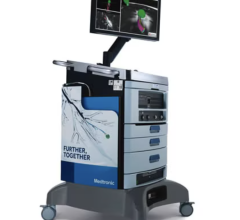
 May 22, 2024
May 22, 2024 

